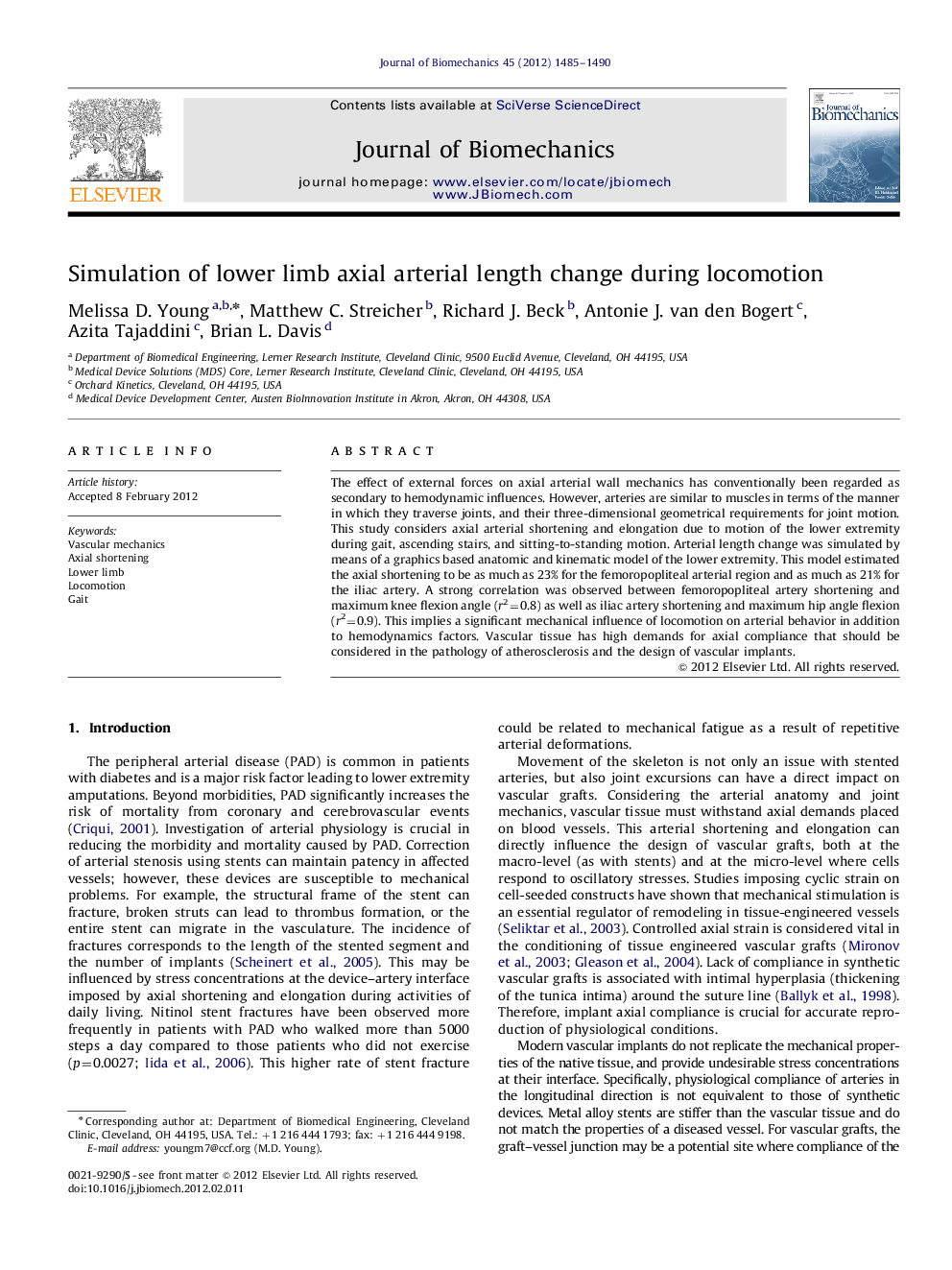| Article ID | Journal | Published Year | Pages | File Type |
|---|---|---|---|---|
| 872292 | Journal of Biomechanics | 2012 | 6 Pages |
The effect of external forces on axial arterial wall mechanics has conventionally been regarded as secondary to hemodynamic influences. However, arteries are similar to muscles in terms of the manner in which they traverse joints, and their three-dimensional geometrical requirements for joint motion. This study considers axial arterial shortening and elongation due to motion of the lower extremity during gait, ascending stairs, and sitting-to-standing motion. Arterial length change was simulated by means of a graphics based anatomic and kinematic model of the lower extremity. This model estimated the axial shortening to be as much as 23% for the femoropopliteal arterial region and as much as 21% for the iliac artery. A strong correlation was observed between femoropopliteal artery shortening and maximum knee flexion angle (r2=0.8) as well as iliac artery shortening and maximum hip angle flexion (r2=0.9). This implies a significant mechanical influence of locomotion on arterial behavior in addition to hemodynamics factors. Vascular tissue has high demands for axial compliance that should be considered in the pathology of atherosclerosis and the design of vascular implants.
